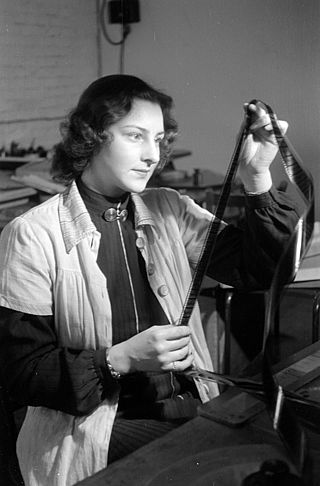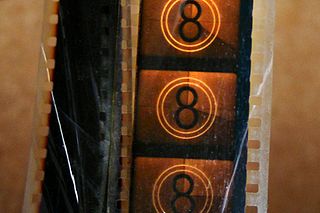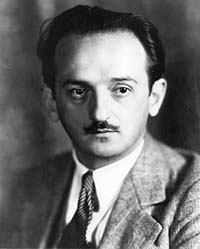Related Research Articles

Film editing is both a creative and a technical part of the post-production process of filmmaking. The term is derived from the traditional process of working with film which increasingly involves the use of digital technology. When putting together some sort of video composition, typically, you would need a collection of shots and footages that vary from one another. The act of adjusting the shots you have already taken, and turning them into something new is known as film editing.

Cinematography is the art of motion picture photography.
Cinéma vérité is a style of documentary filmmaking developed by Edgar Morin and Jean Rouch, inspired by Dziga Vertov's theory about Kino-Pravda. It combines improvisation with use of the camera to unveil truth or highlight subjects hidden behind reality. It is sometimes called observational cinema, if understood as pure direct cinema: mainly without a narrator's voice-over. There are subtle, yet important, differences between terms expressing similar concepts. Direct cinema is largely concerned with the recording of events in which the subject and audience become unaware of the camera's presence: operating within what Bill Nichols, an American historian and theoretician of documentary film, calls the "observational mode", a fly on the wall. Many therefore see a paradox in drawing attention away from the presence of the camera and simultaneously interfering in the reality it registers when attempting to discover a cinematic truth.

Experimental film or avant-garde cinema is a mode of filmmaking that rigorously re-evaluates cinematic conventions and explores non-narrative forms or alternatives to traditional narratives or methods of working. Many experimental films, particularly early ones, relate to arts in other disciplines: painting, dance, literature and poetry, or arise from research and development of new technical resources.

A film leader is a length of film attached to the head or tail of a film to assist in threading a projector or telecine. A leader attached to the beginning of a reel is sometimes known as a head leader, or simply head, and a leader attached to the end of a reel known as a tail leader or foot leader, or simply tail or foot.
Robert C. Banks, Jr. is an American experimental filmmaker.
Postmodernist film is a classification for works that articulate the themes and ideas of postmodernism through the medium of cinema. Some of the goals of postmodernist film are to subvert the mainstream conventions of narrative structure and characterization, and to test the audience's suspension of disbelief. Typically, such films also break down the cultural divide between high and low art and often upend typical portrayals of gender, race, class, genre, and time with the goal of creating something that does not abide by traditional narrative expression.
The Flicker is a 1966 American experimental film by Tony Conrad. The film consists of only 5 different frames: a warning frame, two title frames, a black frame, and a white frame. It changes the rate at which it switches between black and white frames to produce stroboscopic effects.

Slavoljub "Slavko" Vorkapić, known in English as Slavko Vorkapich, was a Serbian-born Hollywood montagist, an independent cinematic artist, chair of USC School of Cinematic Arts, chair of the Belgrade Film and Theatre Academy, painter, and illustrator. He was a prominent figure of modern cinematography and motion picture film art during the early and mid-20th century and was a cinema theorist and lecturer.
Richard Roger Reeves is a Canadian animated filmmaker. He is known for his whimsical abstract animated films created using a drawn on film technique.

A film – also called a movie, motion picture, moving picture, picture, photoplay or (slang) flick – is a work of visual art that simulates experiences and otherwise communicates ideas, stories, perceptions, feelings, beauty, or atmosphere through the use of moving images. These images are generally accompanied by sound and, more rarely, other sensory stimulations. The word "cinema", short for cinematography, is often used to refer to filmmaking and the film industry, and the art form that is the result of it.
Non-narrative film is an aesthetic of cinematic film that does not narrate, or relate "an event, whether real or imaginary". It is usually a form of art film or experimental film, not made for mass entertainment.

Edwin Middleton (1865–1929) was a film director in the United States.

African American cinema is loosely classified as films made by, for, or about Black Americans. Historically, African American films have been made with African-American casts and marketed to African-American audiences. The production team and director were sometimes also African American. More recently, Black films featuring multicultural casts aimed at multicultural audiences have also included American Blackness as an essential aspect of the storyline.
A still image film, also called a picture movie, is a film that consists primarily or entirely of still images rather than consecutive still images in succession, forgoing the illusion of motion either for aesthetic or practical reasons. These films usually include a standard soundtrack, similar to what is found in typical sound films, complete with music, sound effects, dialogue or narration. They may also use various editing techniques found in traditional films, such as dissolves, zooms, and panning.
Maximalist film or maximalist cinema is related to the art and philosophy of maximalism, a reaction against minimalism.
Minimalist cinema is related to the art and philosophy of minimalism.
Arthouse animation is a combination of art film and animated film.
Stephen Altman is an American production designer. He was nominated for an Academy Award in the category Best Production Design for the film Gosford Park. He is the son of American filmmaker Robert Altman.
Arthouse musical is a combination of an art film and a film musical.
References
- ↑ The Films Of Robert Banks & Bruce Checefsky|Experimental Cinema
- ↑ Black X: African Diaspora Experimental Film Series — maysles documentary center
- ↑ A celebration of Black filmmakers at Block Cinema - Chicago Reader
- ↑ Frame by Frame III - Google Books (pg.506)
- ↑ Making Images Move - Google Books (pg.145)